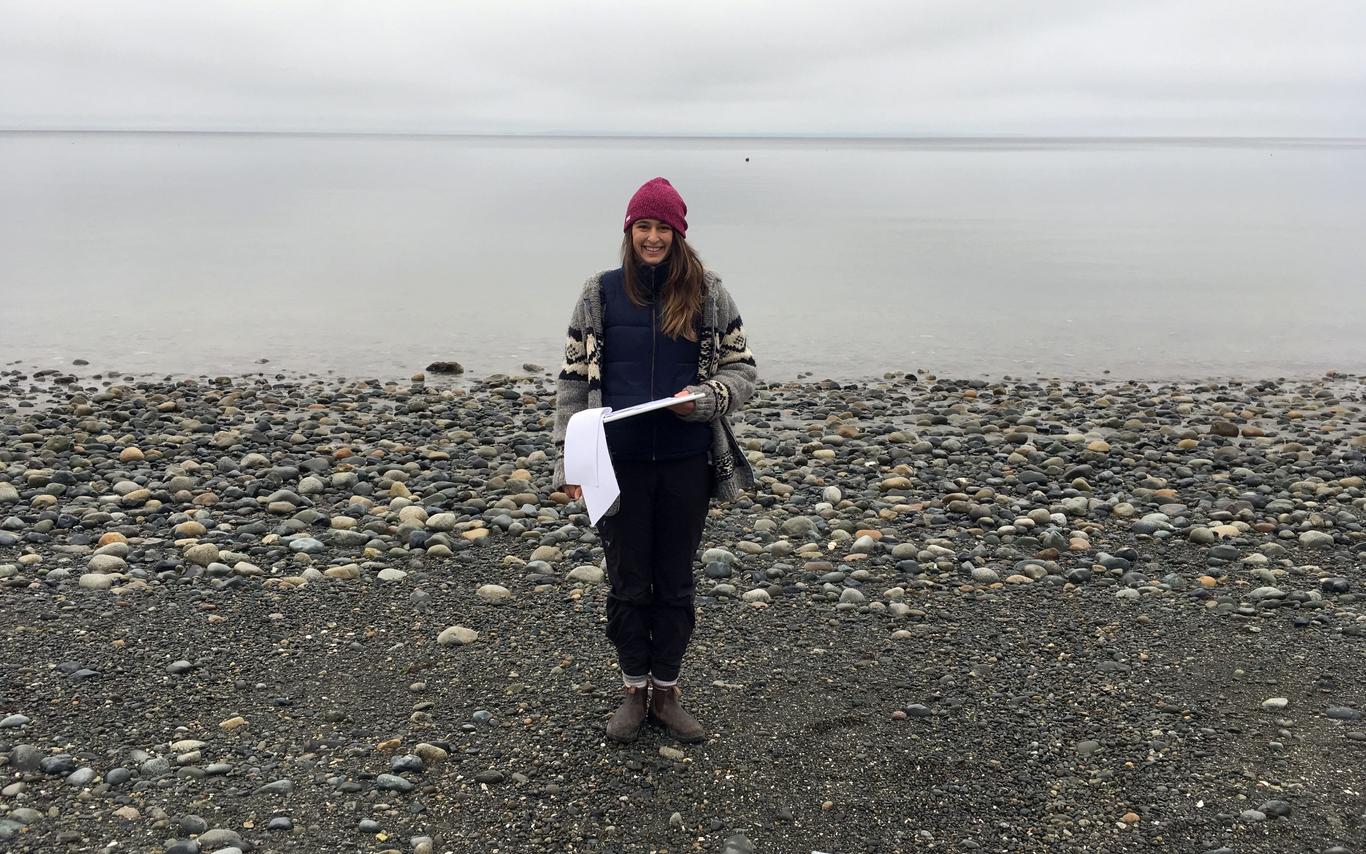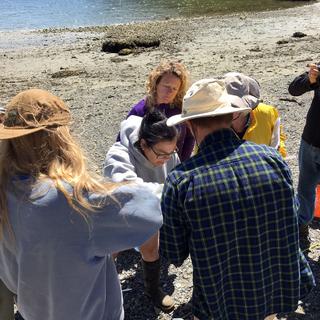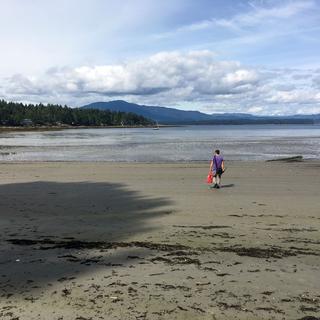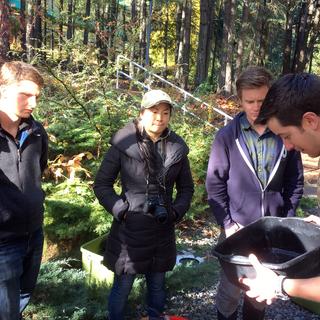Over the past year, Project Coordinator, Haley Tomlin and the MABBRI team have been working on putting together a forage fish monitoring program. As a biologist in training, I got pretty excited when I found out this project was in the works. When it was announced that Phillip Dionne from the Washington Department of Fish and Wildlife was coming up to teach us the methods they have been using in Puget Sound for decades, I jumped at the opportunity to take part in the training. The day started in the classroom, where Phil gave us the low-down on local forage fish, so that we could all start on the same page. Along with much of the MABRRI gang, was Pam Thuringer, a biologist from Victoria who has been integral to our team, and our friend Rachel Wang, from the World Wildlife Foundation.
For those who may not be aware, forage fish are a group of non-related fishes that occupy an important niche in the marine food-chain. For this project, we are particularly interested in looking at beaches along East Vancouver Island, to assess whether Pacific sand lance and surf smelt are depositing their eggs on our shores, and if so, what we can do to protect them.
After a thrilling morning of fish chat (my favorite kind of chat), we all took off to the beach to practice sampling methods. We picked an area just north of Pipers Lagoon, found a spot that was just right along the tide line, unrolled our tape measure, and got to sampling. We brought our samples back to the VIU campus to process them by the vortex method, which is just as cool as it sounds. Using a gold panning device, a pump, and some buckets and sieves, we were able to separate the sample materials by density, which means any organics, like eggs, will be filtered out of the samples for further inspection.
Finally, we took our samples back to the lab to look for forage fish eggs under the microscope. Unfortunately, we didn’t find any eggs in our particular samples, but luckily, Phil was prepared with some eggs for us to look at. We practiced our species identification and even learned to tell apart different stages of embryonic development within the eggs.
Since then, we have been out a few more times sharpening our methodology and scouting out locations for sampling. In the new year we will be hitting the ground running with collection and analysis of our samples, and if our preliminary results are any indication, this will be a highly successful project.






